Lesson Plan: Sensory Mapping at Historic Sites, Grades 3-5
Spring 2023 | Weeksville Heritage Center, Brooklyn, NY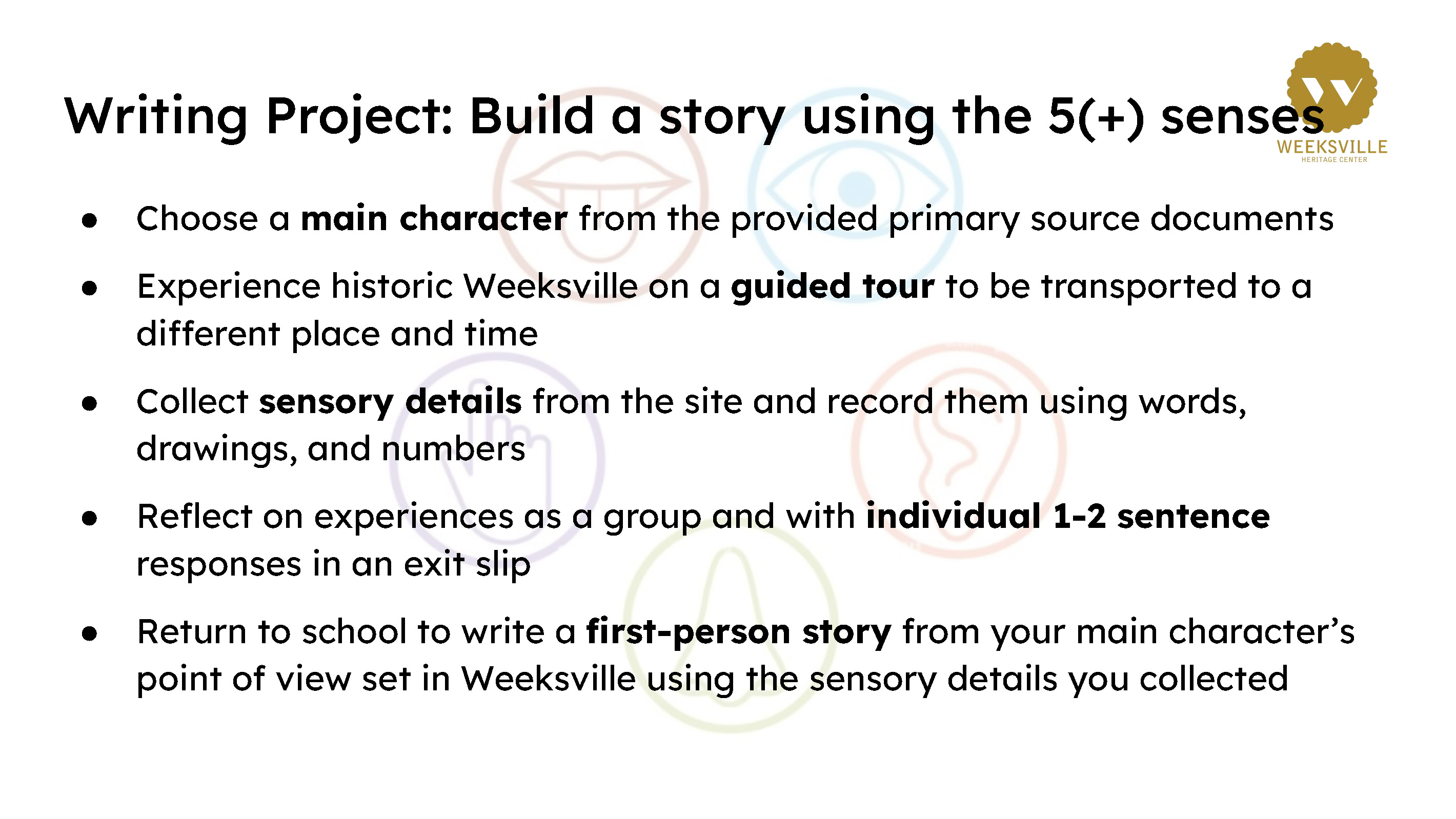
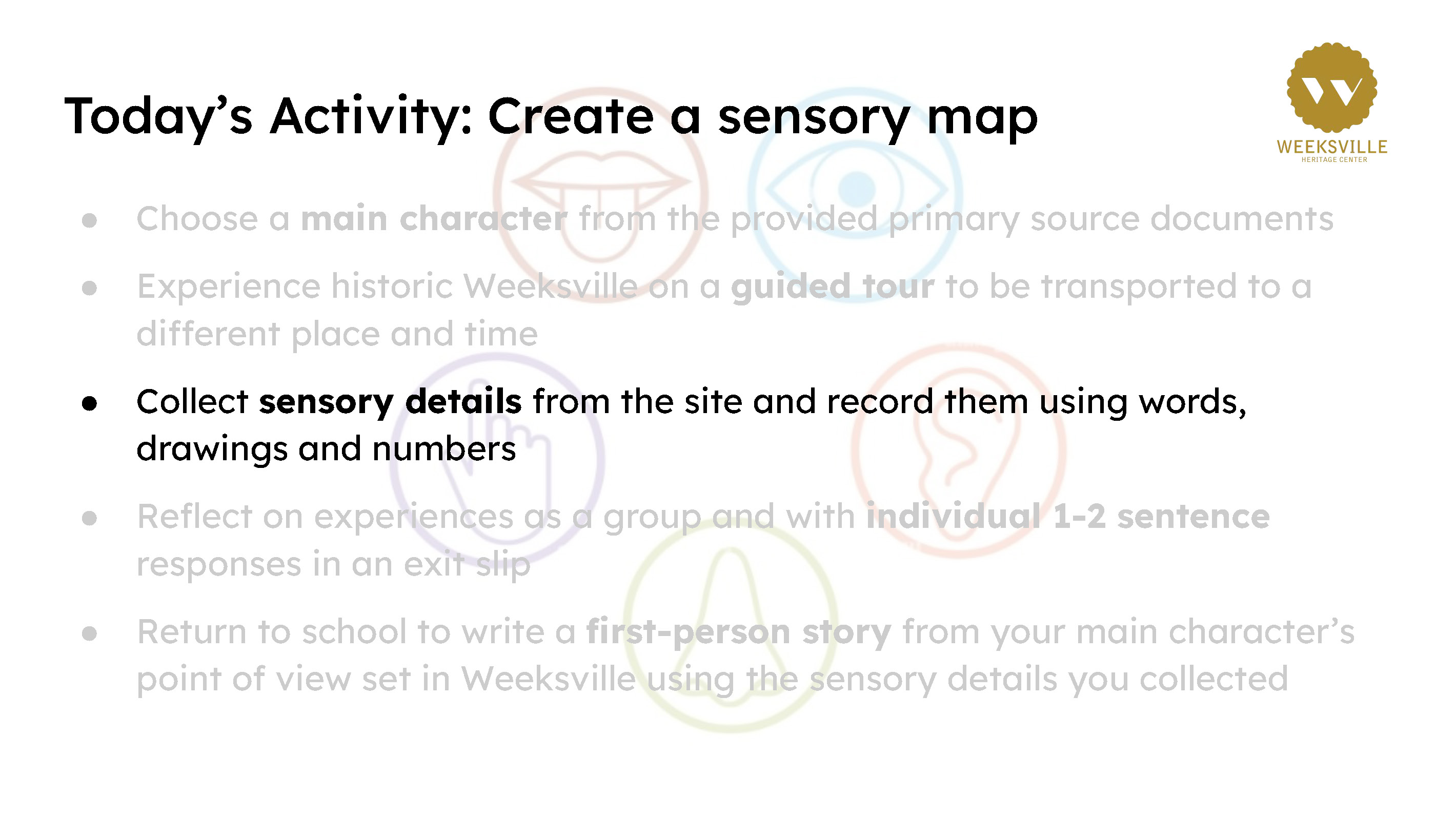
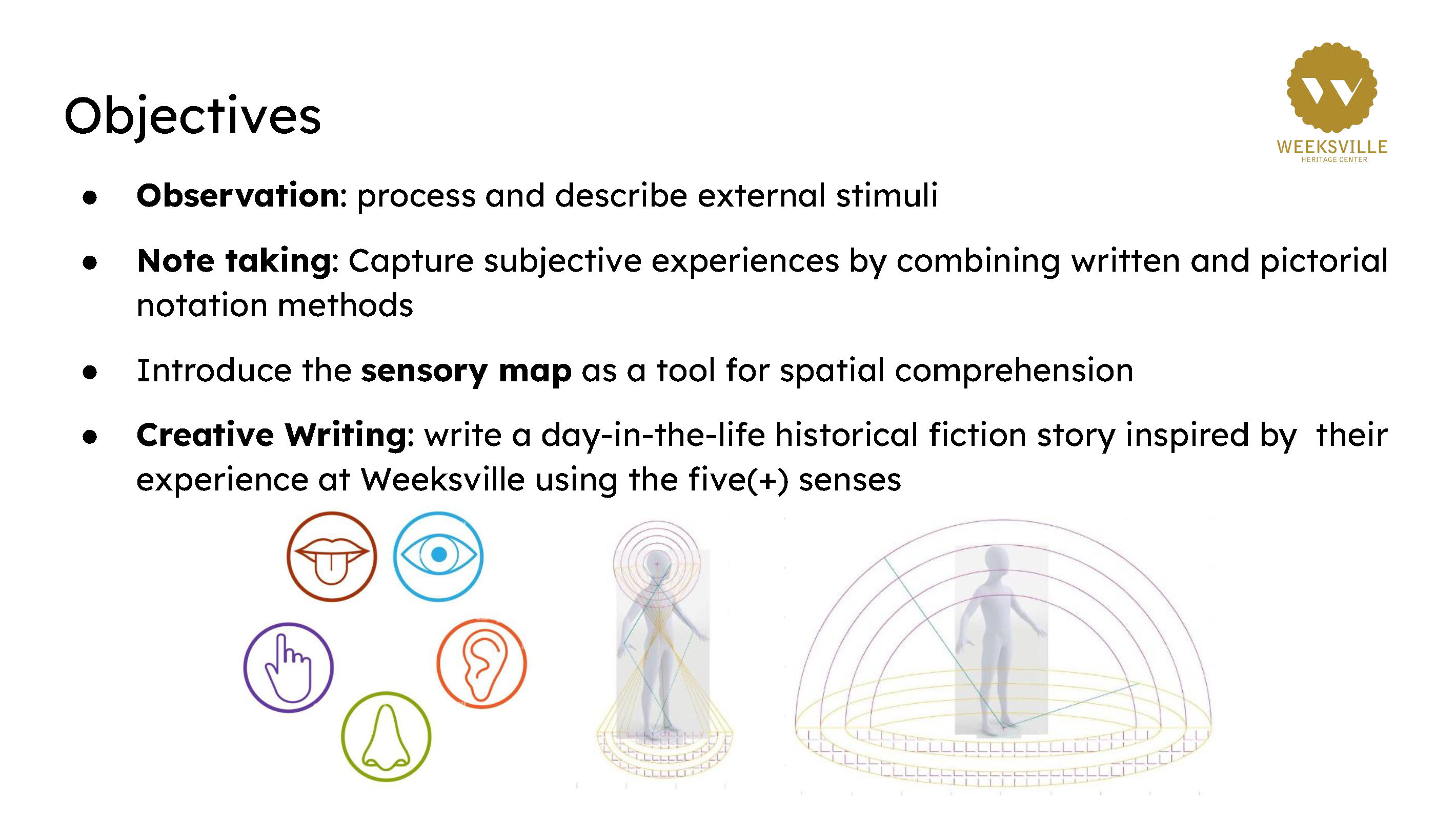



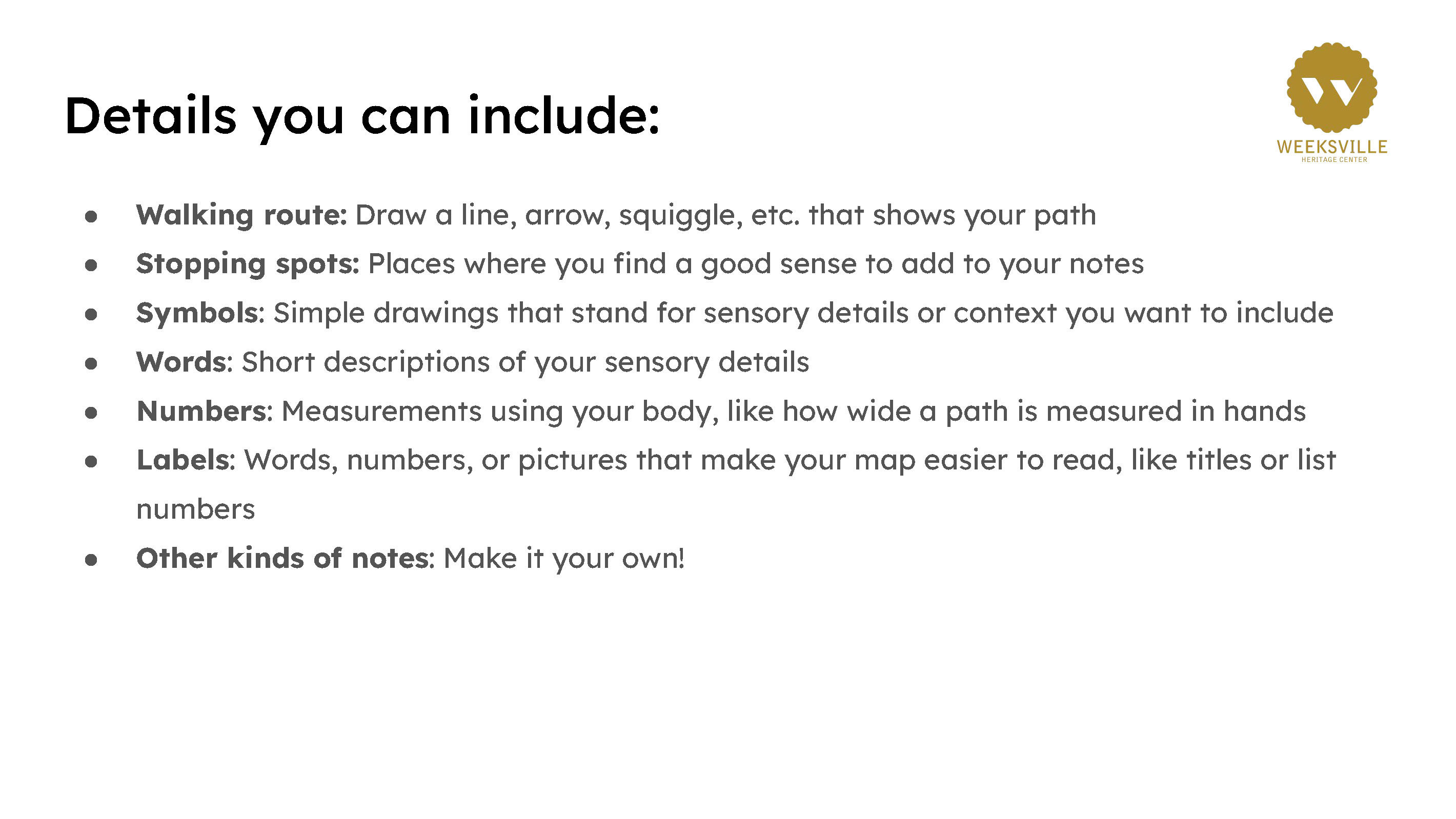
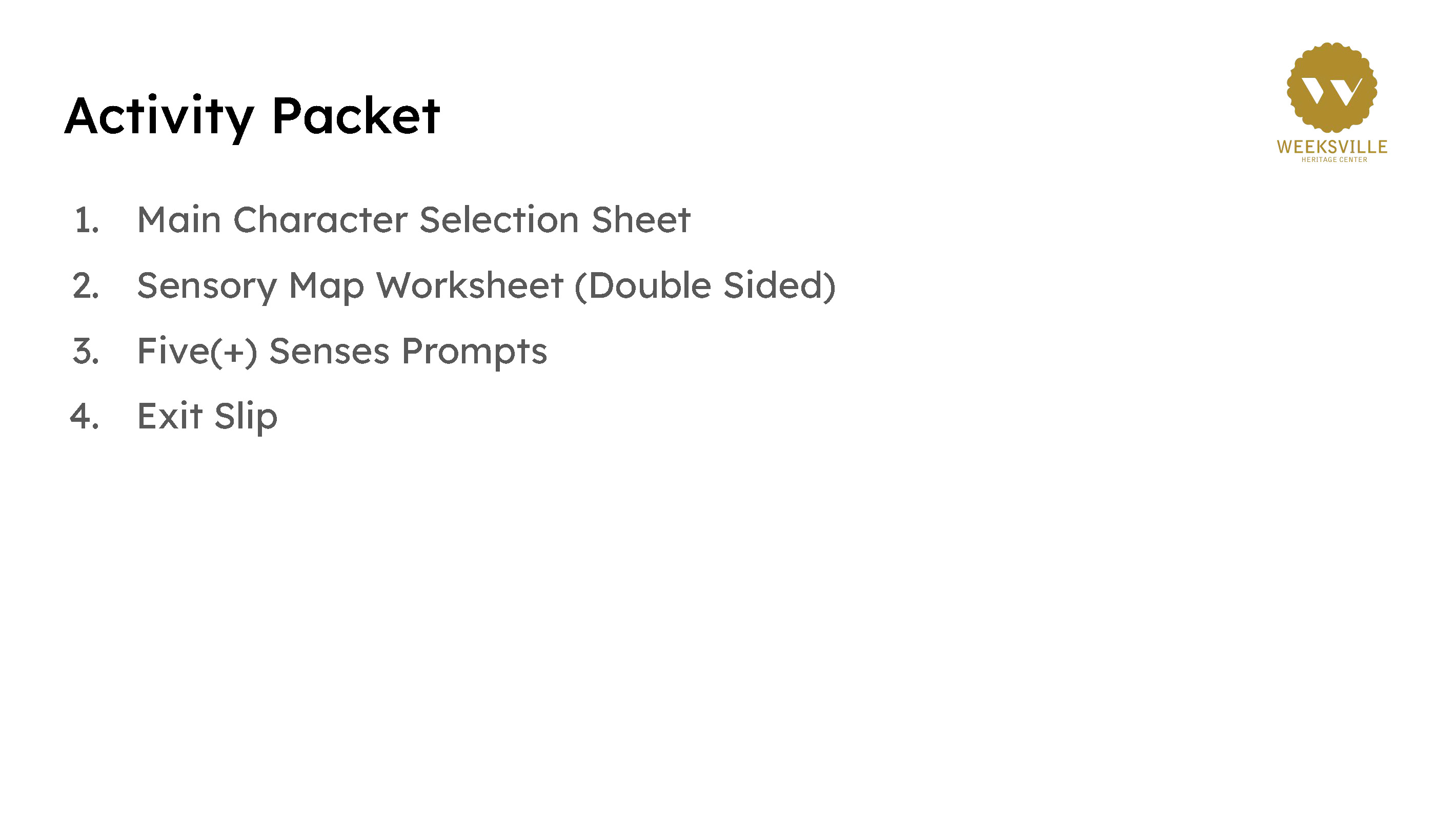


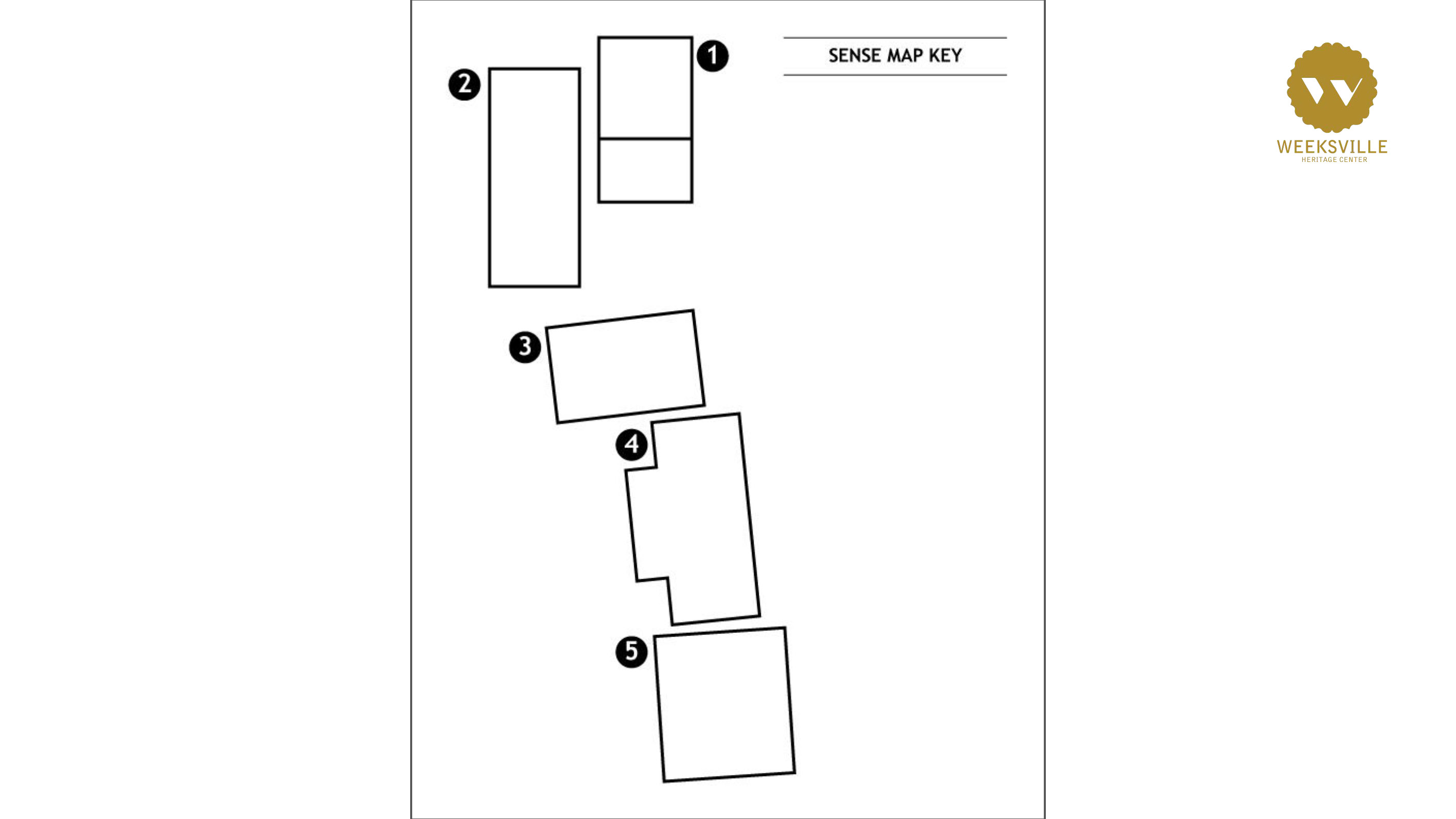

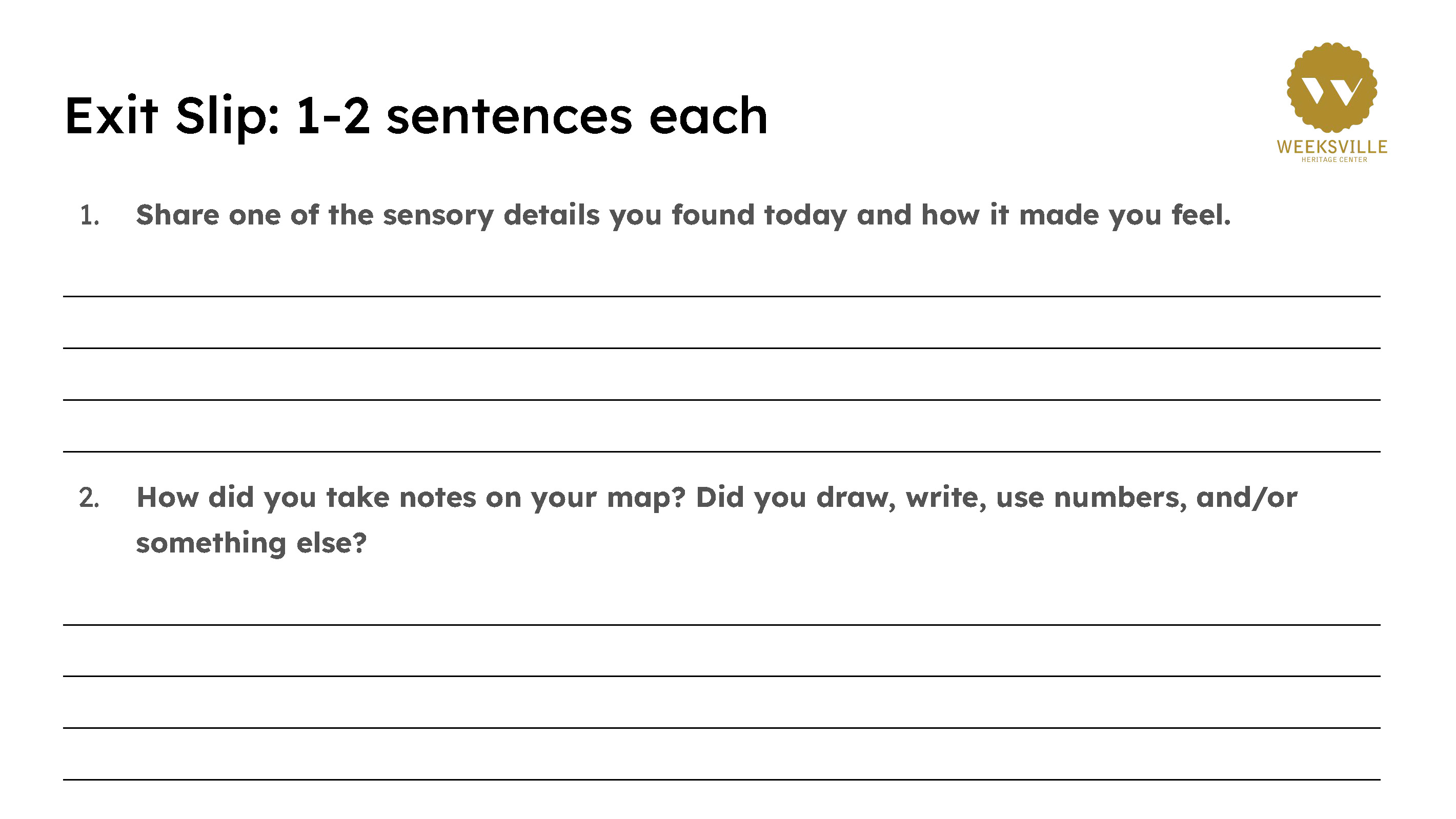
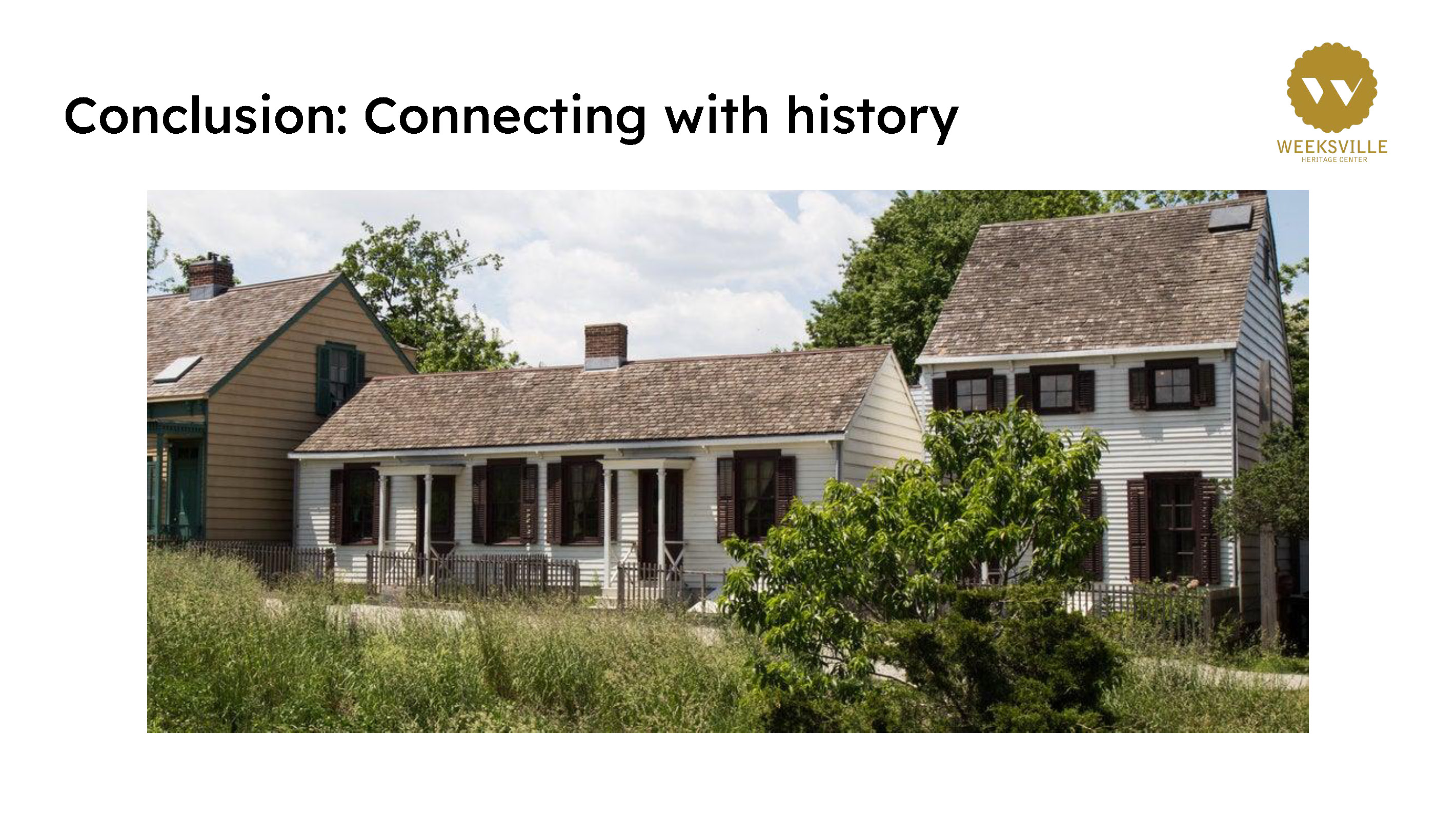
Hands-On Activity Overview
This is a sensory mapping activity called “Sensing Weeksville” intended to satisfy MLA/English creative writing common core requirements by teaching students how to create stories that explore the five senses and, additionally, how people occupy settings and physical space. It is designed to be advanced for 3rd Grade, on target for 4th Grade, and additional complexity can be added for 5th Grade.
The activity is intended as the in-person, hands on module for a larger Creative Writing unit on writing using all five senses. By the end of this unit, each student will complete a short work of first-person historical fiction set in Weeksville, exploring a slice-of-life for someone living in Weeksville in the past using rich sensory imagery. To build this story, students will gather relevant historic context and sensory imagery from the following sources:
- Primer: an informational lesson at school from their classroom teacher
- A history tour onsite from an educator, which will transport them to the past
- A hands-on sensory mapping activity onsite, facilitated by an educator with classroom teacher support, to ground students’ creative imagination in tangible, personal, subjective sensory interactions.
For their story, students will first choose a main character from the four provided archival primary source images selected. Their goal will be to eventually write a story in first person from this character’s point of view, so each grade level can engage with varying degrees of complexity with the task of building their sensory map both from their own and their imagined character’s point of view. Onsite, these characters will be presented to students in pictures frames, so they can imagine that they are perhaps family photos.
Once students have selected their main character, the educator will provide a short introduction to the concept of a sensory map and the day’s task. The educator will explain that we use our sense of sight, sound, touch, taste, smell, balance, and space to understand a place. By taking time to explore a place and record details that jump out to us, we can understand a place on a level so deep and personal that we can then bring it to life for other people. Though everyone uses their senses differently, and not all people use the same senses, we can all describe our own experiences to show other people how we feel, what we see, and what we smell through writing. Even people living 100 to 200 years ago used their senses to explore and understand where they lived!
After receiving an overview of sensory maps and being given an opportunity to ask questions, students will receive activity packets outlining their task. They will explore the landscape and historic interiors of Weeksville and record notes on their maps. They should walk freely around the site, tuning their senses to their surroundings. When they encounter a sensory detail that they want to explore further, they should record where they found it, what it was, and what kind of sense they were using. They should use a combination of words, pictures, and numbers to describe each sensory detail. Educators and teachers will be available and should circulate to make sure students know what they are doing and help students get started if they seem lost.
At the end, the group will come together and the educator will pass out exit slips. An opportunity for students who volunteer to tell the group what they found will be made available, and the educator will conclude with the key theme: that using our senses to describe where we are allows us to tell stories with more detail, to understand places in our own unique way, and that people living in Weeksville used their senses just like we do to understand and experience where they lived.
Materials
- Portraits: Primary source photographs for students to choose from
- Sensory Map Worksheets: Base diagram of Weeksville site (plan view)
- Writing/drawing materials: pens and clipboards
- For certain senses that may be absent and/or too difficult to imagine, props and audio clips can be introduced.
Relevant Prior Knowledge
Students should have a primer of the basic facts of what Weeksville was. They should know that it was a thriving, self-sustaining community, that free African-Americans lived here, and that the Hunterfly Road houses are only a small remnant of what was once a much larger community.
Measuring Student Success
- Completion: Have students filled out their sensory maps with their subjective observations?
- Clarity: Can outside viewers understand the sensory maps that students create?
- Reflection: Can students describe sensory highlights and synthesize their takeaways for the group? If they are not comfortable speaking in front of everyone, can they do so in a 1-2 sentence written reflection “exit slip”?
- Application: Can students translate their in person experiences into a written historical fiction story after leaving Weeksville?
